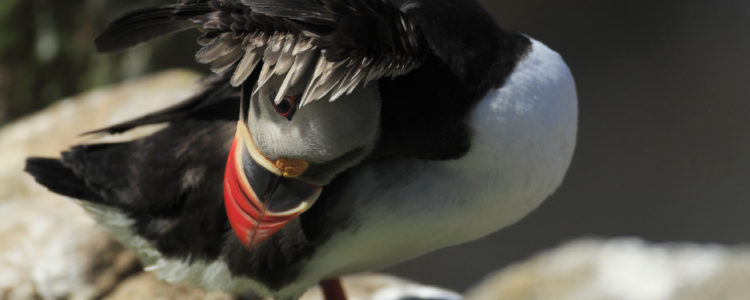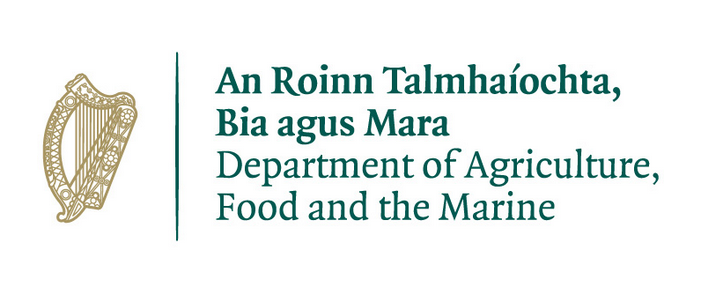
What is a Wildlife Crime?
Wildlife crime is any act that contravenes current legislation governing the protection of wild animals and plants.
The two principal pieces of national legislation protecting wildlife are the Wildlife Acts, 1976 to 2023 and the European Communities (Birds and Natural Habitats) Regulations 2011, which transposes the E.U. Birds Directive and the Habitats Directive into Irish law.
Both of those statutes are administered by the Minister for Arts, Heritage and the Gaeltacht through the National Parks and Wildlife Service of that Department.
The Acts and Regulations provide for a person to apply to the Minister for a licence, permission or derogation (an exemption from or relaxation of a rule or law) to permit certain actions that would normally be prohibited.
Enforcement of Protection of Wild Animals
“Anyone who hunts, kills, injures or possesses a protected wild animal otherwise than under and in accordance with a licence, or who wilfully interferes with or destroys its breeding or resting place is guilty of an offence.
WHAT IS WILDLIFE CRIME – PODCASTS
Superintendent Martin Walker talks about wildlife crime to Gerry Kelly of LMFM Radio – 19th Sept 2019
Wildlife crime is worth a staggering €20 Billion every year around the world sadly we are significant contributors in Ireland – Superintendent Martin Walker from an Garda Siochana joined Gerry for a most interesting conversation.
Go to minute 22.20 into the programme
Superintendent Martin Walker and Conservation Ranger Noel Bugler talk about wildlife crime to Ciara Plunkett of Kildare Today Kfm Radio – 20th April 2016
Wildlife crime in rural Kildare is increasing in frequency. It involves off-licence hare coursing, deer poaching and finching, and means regular trespassing on lands throughout the county. Its resulted in an up-surge in related crime such as illegal gambling, damage to livestock and, on occassion, assaults or harassment of landowners. Ciara’s been speaking to Kildare District Superintendent Martin Walker and Noel Buglar, Conservation Ranger with the National Parks and Wildlife Service.
Examples of wildlife crimes in Ireland
BIRDS
- Finch Trapping: the keeping, breeding and showing of native finches and other passerines, which are closed-ringed specimens bred in captivity is a common and popular activity among bird fanciers. Unfortunately there is an illegal trade with birds taken from the wild by traps, nets and birdlime and passed off as captive bred specimens. Prosecutions are taken for this activity regularly.
- Hunting, killing or possession of a wild bird otherwise than under and in accordance with a licence or permission granted by the Minister under the Wildlife Acts
- Wilfully destroying, injuring or mutilating the eggs or nest of a wild bird
- Wilfully disturbing a wild bird on or near a nest containing eggs or unflown young
- Egg collecting; thankfully this activity appears to be in decline in Ireland
BATS
- Killing, injuring or taking ANY species of bat
- Interfering with or destroying a bat roost (whether the roost is occupied or not, even in an attic of a dwelling house)
BADGERS
- Hunting or killing a badger, otherwise that under and in accordance with a licence granted by the Minister under the Wildlife Acts
- Wilfully interfering with or destroying a badger sett (den/breeding or resting place)
- Baiting ( dog fighting a badger in an enclosed area or at their setts)
HARES
- Illegal / unregulated hare coursing – fairly common and widespread activity, prosecutions are regularly taken
- Trapping or selling hares, other than to a coursing club affiliated to the Irish Coursing Club
SEALS & CETACEANS
- The Wildlife Acts protects all Porpoise, Seal and Whale species
- Seals are sometimes killed unlawfully, possibly by people who believe they damage fish stocks
C.I.T.E.S
- C.I.T.E.S (Convention on International Trade in Endangered Species of Fauna and Flora)
- Trade, Possession and Dealing in species of flora and fauna which are listed as endangered in their country of origin
- Smuggling endangered species and their parts (e.g. tortoises, rhino horn, ivory and caviar)
TRAPS
The trapping of birds and animals, whether they are protected species and done under licence or animals which are not protected, can only be done with traps, snares or nets which are approved for that purpose.
Approved traps are designed to either kill an animal instantly or detain them until they can be dispatched humanely.
- Gin (leg hold) Traps are completely outlawed in this State and the European Community. Prosecutions are taken for;
- Sale / possession /use of/ importation from outside the E.U. of traps, snares and nets which are not approved for the purpose of the Wildlife Acts
WILDLIFE DEALING
Wildlife dealing, including Taxidermy, is regulated and carried out under licence from the Minister. Wildlife dealers are obliged to keep records of their transactions, which are inspected regularly by NPWS Rangers.
- It is an offence for a person who is not a licensed wildlife dealer to sell, keep for sale or engage in taxidermy in respect of any protected wild bird or protected wild animal or any parts, products or derivatives thereof
INVASIVE SPECIES
- Deliberately introducing any non-native plant or animal species into the wild (e.g. Japanese knotweed, muntjac deer)
PROTECTED FLORA
- Certain species of native rare plants are protected under the Wildlife Acts Flora (Protection) Order, 1999
- It is an offence to cut, pick or otherwise take , damage or destroy any species of protected flora
- To wilfully alter, damage, destroy or interfere with the habitat or environment of protected flora
HEDGEROWS
- Cutting hedgerows or to cut, grub, burn or otherwise destroy vegetation growing on uncultivated land between 1st March and 31st August (the bird nesting season) in any year. Prosecutions are regularly taken.
- There are some exemptions to this for public health and safety (Local Authorities etc) reasons and certain farming activities
HABITAT DESTRUCTION
- Causing damage to wildlife conservation areas designated as ‘Special Areas of Conservation’ (SACs) Special Protected Areas (SPAs) and Natural Heritage Areas (NHAs) (e.g. certain raised bogs, sand dunes and bird habitats etc)
- Carrying out potentially damaging activities which require the written consent of the Minister without seeking or obtaining his consent to do so, e.g. cutting turf in a raised bog SAC
HUNTING / POACHING
- Entry on lands with hunting equipment for the purpose of hunting wild birds or wild animals without the permission of the owner/occupier or other person entitled to enjoy hunting rights over the land
- Hunting a protected species between one hour after sunset and one hour before sunrise
- Hunting a protected species with lamps, image intensifiers
- Using a stationary or moving vehicle for the purposes of hunting any wild animal
- Using a wild bird or wild animal which is tethered or secured by braces, confined in a cage or pen or which is maimed or injured for the purpose of hunting any wild bird or wild animal
- Using a stuffed or artificial decoy in the form of any bird for the purpose of hunting and wild bird, other than wood pigeon, wild duck and wild geese
- Using an electrical or other instrument or appliance (including recording apparatus) emitting sound, for the purpose of hunting any wild bird or any wild animal. It is permitted to use manually or orally operated whistles emitting sounds similar to the call of ducks, geese and plover for the purpose of hunting any of those species
- Hunting any wild bird, wild mammal, or protected wild animal with any poisonous, poisoned or stupefying bait
- Placing or allowing to be placed any poisoned or anaesthetic bait that is animal or contains animal substance or other animal derivate in any place to capture, kill, poison or injure any wild bird and other listed fauna or where it is likely to do so
Recording evidence at the Crime Scene
Assessing whether a criminal offence has taken place may not always be straight forward and other possibilities such as natural deaths, predation and legal hunting should be considered.
If you come across a wildlife crime scene or a dead bird or object that may be related to a wildlife crime, every piece of information is – or might be – important, but it needs to be recorded properly and accurately for the authorities to have a chance of prosecuting an offender.
Before you do anything else it is very important that:
- You do NOT put yourself in danger by approaching anyone you suspect of committing a crime – they may be violent and/or aggressive.
- You do NOT touch any dead birds or animals. They may be poisoned baits or victims of poisoning. Many poisons (e.g. Carbofuran) are extremely dangerous to us as well as wildlife in even very small amounts and can be absorbed through the skin.
- You do NOT disturb the scene by walking around unnecessarily – small pieces of evidence (cigarette ends, footprints, the marks left by a spade etc) may be lost or trampled into the mud or grass.
- You do NOT move any items at the scene – unless asked to do so or an animal or human”s welfare is/may be compromised by leaving it at the scene.
- You do NOT mark the site (e.g. with a white plastic bag) Although being able to see a marker from a distance might sound like a good idea, it will also alert an offender that someone has been at the site and they might go back and remove evidence.
- You do NOT do anything illegal yourself – leave crime to the criminals!
Record the date and time
- Record the transport
Do this as soon as possible, as suspects can be traced from the registration number
Photograph/write down any vehicle registration numbers that are or might be related to the incident. It is legal to record a registration number if you suspect that the vehicle has been or may be used in a crime. - Record the person
Recording the offender’s face is important of course, but their clothing, the bags they’re carrying, the equipment they’re using are all important too. - Record the scene
Take photographs or video of the scene using a mobile phone or camera etc (or make as accurate a sketch as possible). - If possible try to cover any items, perhaps with vegetation, to make them safe; but make sure you don’t disturb the crime scene in the process!
- If photographing an object, try to put something beside it for scale (e.g. a coin or notebook) providing it won’t disturb the crime scene.
- Record the location
It is particularly important to record locations accurately (apps that provide GPS data are available for most smartphones)
In an urban area note the address or a description of the location. In the countryside take wide angle photographs of any landmarks; a tree, a distinctive fence line, a hill. - Even if in doubt take a photograph and email it to the National Parks and Wildlife Service nature.conservation@chg.gov.ie
Protected wild birds and protected wild animals under the Wildlife Acts 1976 to 2023
Land Mammals
- Badger
- Deer Species
- Hedgehog
- Red Squirrel
- Otter
- Hare
- Stoat
- Pine Marten
- All Bat Species
- Pygmy Shrew
Marine Mammals
- Dolphin, Porpoise, Seals & Whales
Fish
- Basking Shark
Reptiles
- Common Lizard & Marine Turtle
Amphibians
- Common Frog, Common Newt & Natterjack Toad
Crustacean
- Freshwater Crayfish
Molluscs
- Freshwater Pearl Mussel & Kerry Slug
